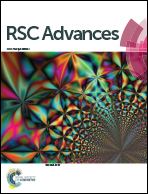A comprehensive study of apixaban's degradation pathways under stress conditions using liquid chromatography coupled to multistage mass spectrometry
Abstract
Apixaban is a novel anticoagulant drug acting as a direct, selective and reversible inhibitor of the coagulation factor Xa. Forced degradation under stress conditions were carried out in order to establish its stability profile. The drug was shown to be stable under photolytic, thermolytic and oxidative conditions, while under hydrolytic conditions, up to seven degradation products were generated for about 15% of drug degradation. The degradation products have been detected by linear gradient reversed phase high-performance liquid chromatography coupled with a photo diode array and with electrospray ionization tandem mass spectrometry. A combination of multistage mass spectrometry and high-resolution mass spectrometry (HR-MS) allowed the structural elucidation. The product ions of the degradation products were compared to those of the apixaban protonated ion so as to assign the most structures possible. This required a study in depth of the drug's fragmentation pattern, which has not been reported so far. In view of the products formed, it appears that hydrolysis of the oxopiperidine moiety of apixaban occurred in acidic medium, whereas that of the tetrahydro-oxo-pyridine moiety would further happen under alkaline conditions. Asides from characterization, the LC method was shown to indicate stability and validated as per the criteria described by the ICH guidelines.


 Please wait while we load your content...
Please wait while we load your content...